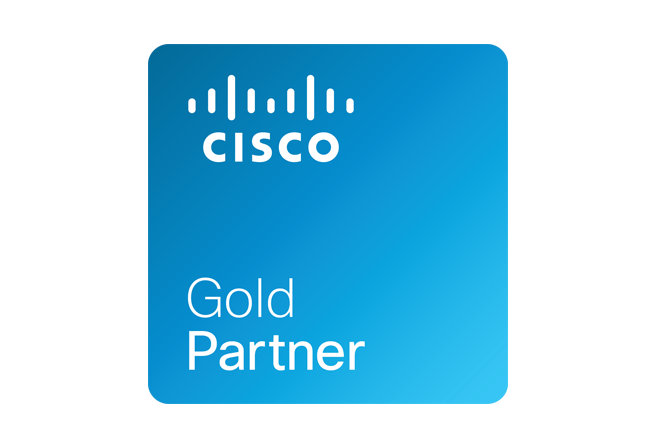What's all the buzz about?
Imagine a network that evolved in line with your needs, saved your employees time and had a zero-risk approach to security – all while reducing your business’ carbon footprint and overall spend. What if you could do all of this AND take full control of all of your business’ networks from one centralised portal with a simple software solution?
Enter SD-WAN.
Software-Defined WAN (SD-WAN) is, as the name would suggest, a software-defined approach to configuring and managing wide-area networks (WANs). Simply put, you can think of it as air traffic control for your networks. As an air traffic controller, you have full view of hundreds of WAN connections from multiple global locations. At your command, traffic can be directed, diverted and deployed safely to its intended destination; keeping your business’ traffic flow running smoothly and securely.
SD-WAN, in essence, is the technology that simplifies the operation and management of the many network connections between sites in an organisation. This enables improvement of application performance, resulting in enhanced user experience, increased business productivity and reduced costs for IT.
The market for SD-WAN remains hot as many organisations are deploying the technology to solve WAN bandwidth limitations, provide reliability/resiliency and improve quality of user experience for cloud-based applications. What’s more, dozens of suppliers are rapidly innovating and maturing their SD-WAN products with innovations in cloud, support for leading SaaS applications, security, and management/automation platforms.
Leveraging the power of Cisco Meraki, Daisy’s SD-WAN solution uses software running in the cloud and a centralised control function to securely and intelligently direct traffic across the WAN, providing simplicity at an organisational level, and guaranteeing flexibility and control, as well as facilitating a predictable application experience.
That’s what all the buzz is about.
Is SD-WAN the future?
Undoubtedly so.
New business models are to thank for driving the need for new network infrastructures. As a result of this drive, a change in WAN usage requires new topologies.
SD-WAN for a post-pandemic world
Even before COVID-19, the cloud, Internet connectivity, and secure remote network access were all important topics for IT teams but these days, they’re dominating conversations. Many organisations are still acclimatising to the day-to-day realities of operating in this strange new landscape. Some are struggling to adopt an all-remote working scenario; others struggle with the upgrades needed to sustain it; others still are struggling to implement hybrid workforce models. Whichever one of these scenarios applies to you, the solution is the same – a secure, cloud-enabled SD-WAN platform.
While SD-WAN is not exactly a new player in the networking field, it has, in many ways, come of age during the pandemic, supplying a safe and secure way for organisations to keep their employees working and working productively. As the world moves forward, SD-WAN can help improve the homeworking experience for the long-term and help businesses operate safely as they start to reopen offices, shops, branches, wherever.
But what does that mean in real terms?
Simply put, SD-WAN is just a better approach to network connectivity that lowers operational costs and improves resource usage for multi-site deployments. Armed with this new level of functionality, network administrators can use bandwidth more resourcefully and guarantee that critical applications run at the highest level of performance without compromising security or data privacy – two huge considerations in a remote working landscape.
SD-WAN gives you the choice of what you want to do with your data traffic. You can prioritise different moments, allocate resources accordingly, support real-time applications such as voice and video, increase your security, and improve application performance.
As the workplace becomes more virtual than physical, employees are connecting to ever-increasing numbers of cloud services. This dispersal of connectivity and the growth of multi-cloud networking will force many businesses to re-tool their networks in favour of SD-WAN technology.
Download our guide Read our blog
What are your challenges?
Digitisation is affecting all sectors and businesses of every size, with network managers having to juggle a range of new applications, such as cloud deployments. And it’s these network managers that are placing greater importance on security, higher bandwidth capacity and overall reliability. Additionally, while remote working becomes the new norm for many businesses, it is more vital now than ever before to connect users to the data and applications they need wherever they are, securely and efficiently. Yet many existing WAN architectures now fall short of the ideal.
So what’s the answer?
SD-WAN is aimed at businesses who are experiencing challenges with:
Current connectivity
Managing multiple devices for their WANs, LAN, WiFi and security
Needing better visibility and more control of their network
Internet security and the threat to their network/business
Needing remote access for their mobile users
Relocating offices or expanding and opening additional locations
SD-WAN can also assist businesses on their digital transformation (DX) journey, including those who:
- rely on cloud applications for communication across locations, users and devices
- need rapid deployment or have a large geographic footprint
- are experiencing bandwidth limitations impacting branch users
- have unpredictable needs, i.e. a quick adoption of a web-based app, such as Internet banking and digital payments driving load management
- are looking at alternatives to MPLS
- are very focussed on low operational cost
- have a distributed network across service providers or countries and want to integrate these networks
Watch our video
 Daisy has been delivering and supporting critical infrastructure solutions for our customers as a Cisco Gold Partner for over 16 years. By partnering with Cisco, we can help our customers grow, be profitable and stay competitive. Cisco ranks #1 in the Gartner SD-WAN Equipment Market Share Report.
Daisy has been delivering and supporting critical infrastructure solutions for our customers as a Cisco Gold Partner for over 16 years. By partnering with Cisco, we can help our customers grow, be profitable and stay competitive. Cisco ranks #1 in the Gartner SD-WAN Equipment Market Share Report.